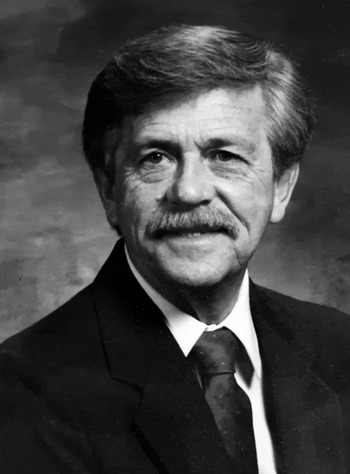Keith H. Woodwick (Figure 1) was born in Tappen, North Dakota, on 4 January 1927, and passed away in Fresno, California, on 1 November 2016 at the age of 89. His early life was spent in his home town, a mid-western community far from the sea. Following his graduation from Tappen High School in 1944, he attended Jamestown College in North Dakota and graduated with a BSc degree in 1949. He began graduate school at the University of Washington where he completed an MSc degree in 1951. There he became interested in hemichordates and developed his thesis on the morphology of an undescribed species of Saccoglossus, a common enteropneust in Willapa Bay, Washington. The director of his research was Dr Dixie Lee Ray, a marine biologist and later Governor of the State of Washington. Keith was subsequently accepted into a PhD programme at the University of Southern California (USC), Los Angeles. The advisor and Chair of his committee was Dr John L. Mohr; his research advisor was Dr Olga Hartman of the Allan Hancock Foundation (AHF).

Fig. 1. Dr Keith H. Woodwick, circa 1985.
Dr Hartman suggested that Keith study the biology of an undescribed species of Polydora that was common in local bays and estuaries in southern California. Keith went on to describe the species as P. nuchalis Woodwick, Reference Woodwick1953, and through fieldwork and laboratory cultures studied the life history and ecology of the species. He eventually published a paper on the larval development of P. nuchalis; at the time, one of the few complete studies of polydorid larvae (Woodwick, Reference Woodwick1960). Dr Donald J. Reish, a contemporary with Keith, helped with culture techniques and other aspects of the fieldwork. As a Research Assistant, Keith was involved with surveys directed by Dr Olga Hartman for the AHF in the offshore Pedro Basin. He identified some of the spionid polychaetes and the enteropneusts collected from these surveys. Keith completed the requirements for his PhD in August 1955.
Keith accepted a faculty position in the Department of Biology at Fresno State University (FSU), Fresno, California, in 1955. As a Professor, he taught courses in zoology, advised students, and began a research programme on spionid polychaetes and enteropneusts. Keith's courses were popular and well-attended. My first encounter with him was in the autumn of 1959, when, as a freshman geology major, I enrolled in his General Zoology course and was subsequently inspired to change my major to biology. In my senior year, I needed a research project to complete my programme and he suggested a topic in his research project on Polydora. He was funded by the National Science Foundation (NSF) to survey and study polydorids along the California coast. My senior project was to crack open crusts of coralline algae (Lithophyllum and Lithothamnion) and remove, count and identify any polydorids encountered. Keith provided lab space, literature and tools, including forceps, pliers, chisels and a hammer for this effort. This was how I was introduced to polychaetes. Other students did the same work on gastropod shells, shells occupied by hermit crabs, and bivalves. Keith asked me if I was interested in graduate work. I said yes, and he offered me a teaching assistantship in the same General Zoology course that had inspired me a few years earlier. Keith directed my thesis research on spionids, which was completed in 1965. Other graduate students of note who later worked with Keith were Todd S. Bridges and Terry Sensenbaugh. Keith felt it was important for his advanced students to be introduced to other workers in the field. We travelled to visit Dr Hartman at AHF twice. In addition to Dr Hartman, students in her laboratory in those years (1964–1965) included Kristian Fauchald and Victor Gallardo. We also visited Dr Reish and met a few of his students at California State University, Long Beach.
After returning to California in 1969 from my own PhD programme, Keith and I collaborated on several projects dealing with spionid systematics and larval development; we jointly published five papers on these studies. Keith's own research continued with spionids, but also enteropneusts. After the hydrothermal vent collections began arriving at the Smithsonian and the Woods Hole Oceanographic Institution in the early 1980s, an expert on enteropneusts was needed to study the so-called spaghetti worms that had been collected. Keith was recruited to study these unusual deep-sea worms and he eventually, with one of his students, described them as a new genus and species: Saxipendium coronatum Woodwick & Sensenbaugh, Reference Woodwick and Sensenbaugh1985. Keith attended at least two international polychaete conferences: (1) the Olga Hartman memorial symposium in 1974 in Los Angeles, where he gave a presentation on the lecithotrophic larvae of Boccardia proboscidea, and (2) the 3rd International Polychaete Conference, in Long Beach, California, in 1989.
Keith was dedicated to his students, both as a teacher and mentor. His field trips in the Invertebrate Zoology class were popular (Figure 2). As a Professor of Biology at FSU, Fresno, he served as a chair of the department, received several research grants, and was one of the founding members of the governing board of Moss Landing Marine Laboratory. In 1987, Keith was honoured as Fresno State's Outstanding Professor. He retired in 1994.

Fig. 2. A field trip, spring of 1964, Left to right: Jim Blake, Keith Woodwick and an unidentified student.
Keith was devoted to his family and faithfully attended his children's and grandchildren's athletic, school and music performances. Keith is survived by Betty L. Woodwick, his wife of 67 years, his two daughters Kelli Woodwick and Colleen Torgerson (currently a Professor at FSU), a son Kevin Woodwick, four grandchildren, and one great-granddaughter.






